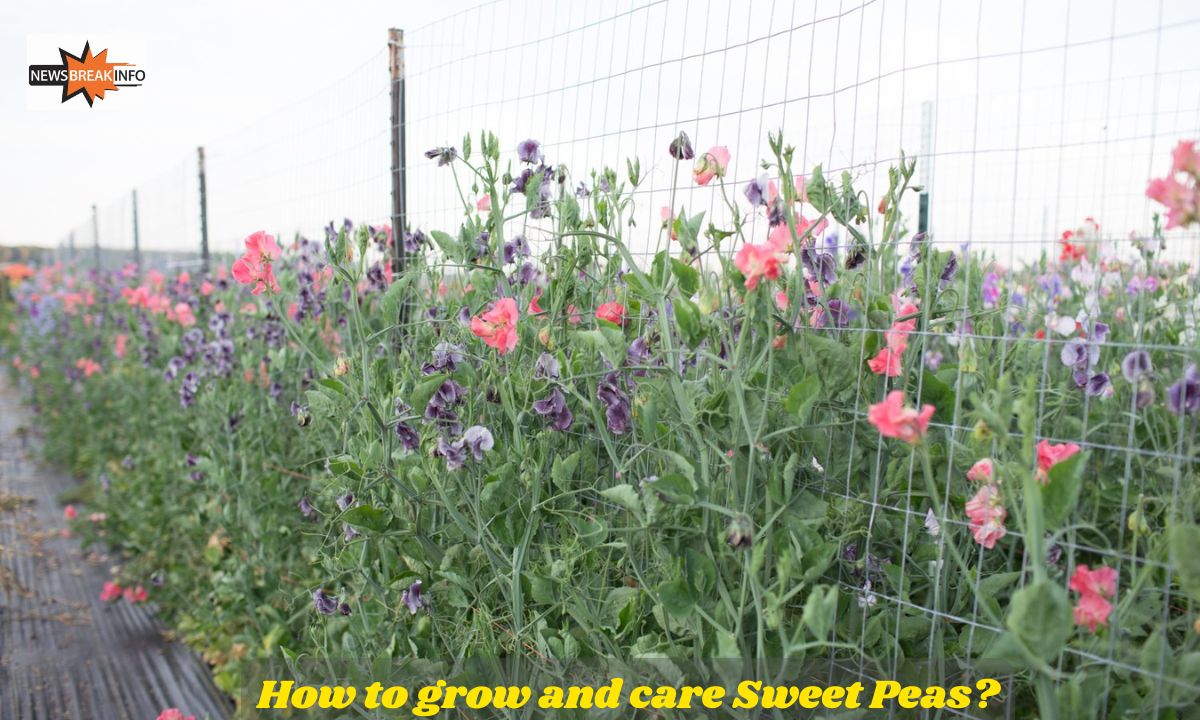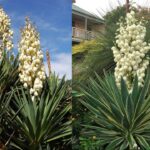Sweet peas are some of the most delightful and fragrant flowers you can grow in your garden. Their beautiful blooms and sweet scent make them a favorite among gardeners.
In this comprehensive guide, we will walk you through the entire process of growing and caring for sweet peas, from starting them from seeds to harvesting their flowers.
Whether you’re a beginner or have some gardening experience, this guide will provide you with everything you need to know to enjoy a healthy and thriving sweet pea garden.
Introduction to Sweet Peas
Sweet peas (Lathyrus odoratus) are annual climbing plants known for their fragrant, colorful flowers. They are part of the pea family and are native to the Mediterranean region.
These flowers are often used in bouquets and floral arrangements due to their delicate appearance and intoxicating scent. Sweet peas come in a variety of colors, including pink, purple, white, red, and blue, and their flowers typically bloom in early summer.
Sweet peas are popular for growing in garden beds, containers, or hanging baskets. They are known for their climbing ability, with vines that can reach up to 6 feet in height.
These plants thrive in cool climates and can be a bit sensitive to extreme heat, so it’s essential to understand their growing needs for the best results.
Starting Sweet Peas from Seeds: The Basics
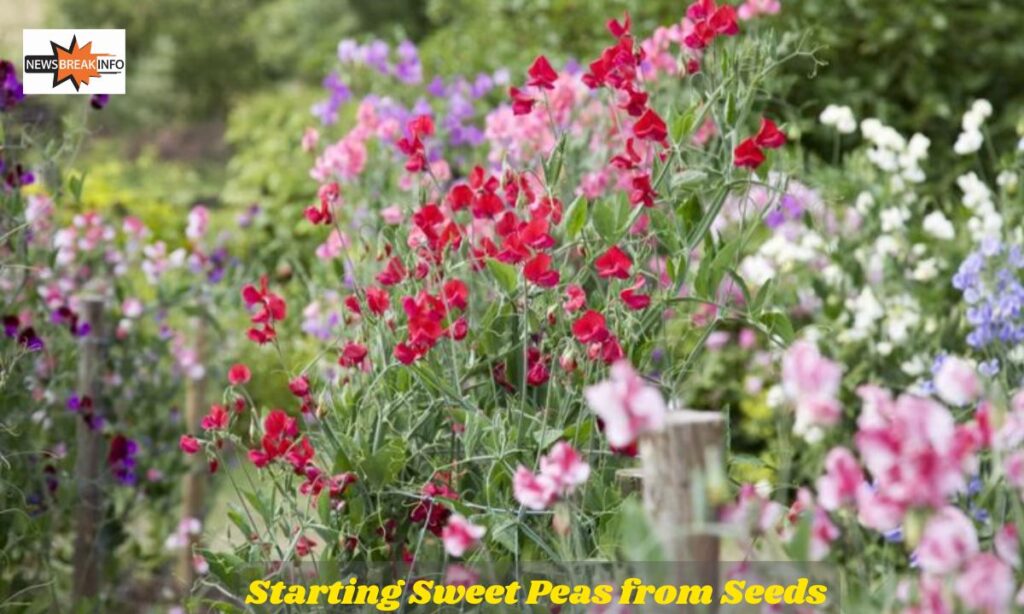
Starting sweet peas from seeds is a rewarding and cost-effective way to grow these beautiful flowers. Here’s how to do it:
Choosing the Right Seeds
Before planting, choose sweet pea seeds that suit your climate and the aesthetic you’re going for. There are many varieties of sweet peas, with colors ranging from soft pastels to bold, vibrant hues. Choose a variety that will bloom at the time you want, whether that’s early in the season or later in the summer.
Planting Sweet Pea Seeds
- Prepare the soil: Sweet peas prefer rich, well-draining soil with a slightly alkaline pH. Add compost or organic matter to the soil to improve its texture and fertility.
- Soak the seeds: Before planting, soak sweet pea seeds for 12-24 hours to soften the seed coat and encourage germination.
- Plant the seeds: Plant the seeds about 1 inch deep and 2-3 inches apart. Sweet peas are best started indoors in early spring or directly sowed outdoors in late fall or early spring.
Ideal Temperature for Germination
Sweet peas thrive in cooler temperatures, so the soil temperature should be between 50°F to 60°F (10°C to 16°C) for optimal germination. Avoid planting them in areas where the temperature fluctuates significantly.
Caring for Sweet Pea Seedlings
Once your sweet pea seeds have germinated, caring for the seedlings is essential to ensure healthy growth.
Providing Support for Seedlings
Sweet pea seedlings will begin to develop tendrils as they grow. Provide support in the form of trellises, fences, or stakes to help them climb and grow vertically. This will keep the plants healthy and prevent them from sprawling on the ground.
Watering Sweet Pea Seedlings
Sweet peas require consistent moisture but don’t like soggy soil. Water the seedlings deeply and regularly, especially during dry spells, but ensure the soil drains well to prevent root rot.
Fertilizing Sweet Pea Seedlings
Fertilizing sweet peas with a balanced, slow-release fertilizer will encourage strong growth and healthy blooms. Avoid over-fertilizing, as too much nitrogen can lead to excessive leafy growth with fewer flowers.
Encouraging Sweet Peas to Bloom
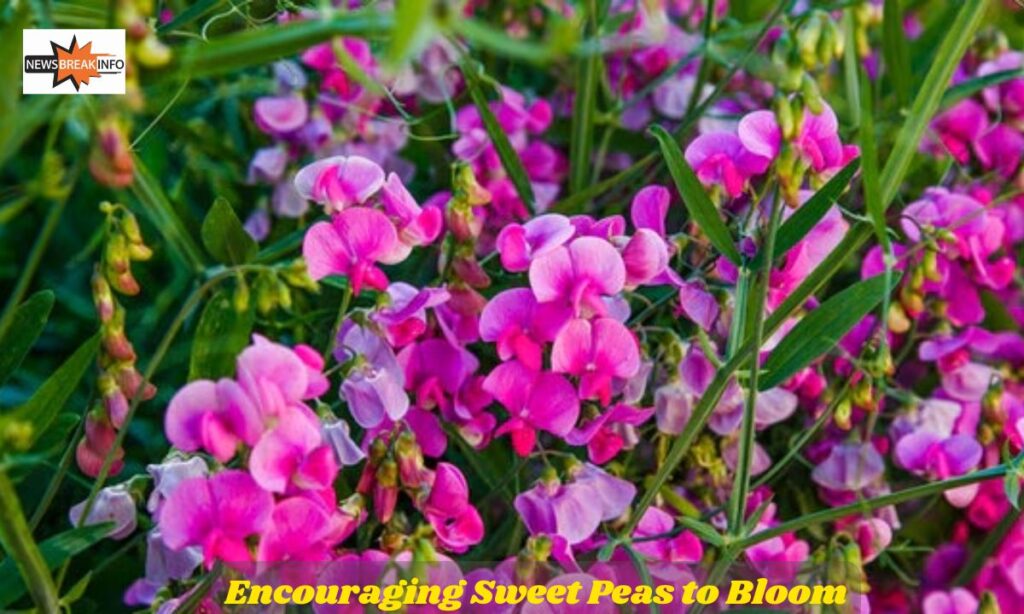
Sweet peas are known for their beautiful and fragrant blooms, but encouraging them to bloom requires some attention to detail.
Providing Adequate Sunlight
Sweet peas need full sun to thrive, ideally receiving 6 to 8 hours of sunlight each day. Ensure that the planting site gets plenty of light to promote flowering.
Pruning Sweet Peas
Regular pruning encourages more blooms and keeps the plant from becoming leggy. Pinch back the tips of the plants when they are young to encourage bushier growth and more flower production.
Temperature and Humidity
Sweet peas grow best in cooler temperatures, between 55°F and 65°F (13°C to 18°C). If the weather gets too hot, the plants may stop blooming. Keep them in a cool, well-ventilated area to prevent heat stress.
Harvesting Sweet Pea Flowers
Sweet peas are usually ready for harvesting when the flowers are fully open and vibrant in color. Here’s how to harvest them:
- Use clean, sharp scissors or pruning shears to cut the stems. This ensures a clean cut and reduces the risk of damaging the plant.
- Cut the flowers early in the morning to preserve their freshness and fragrance.
- Harvest regularly to encourage continued blooming. Removing spent flowers helps the plant focus its energy on producing new blooms.
Preserving Sweet Pea Flowers
If you want to keep sweet pea flowers for bouquets, place them in water immediately after cutting. You can also hang them upside down in a cool, dry place to dry them for later use.
Growing Sweet Peas in Less-Than-Ideal Conditions
While sweet peas prefer cooler climates, they can still grow in less-than-ideal conditions with a few adjustments.
Growing Sweet Peas in Hot Climates
If you live in a warmer climate, try planting sweet peas in a partially shaded area to protect them from the midday heat. You may also want to choose heat-tolerant varieties that can withstand higher temperatures.
Growing Sweet Peas in Poor Soil
Sweet peas are adaptable and can grow in less-than-ideal soil, but they will perform best in rich, well-draining soil. If your soil is poor, improve it by adding organic matter like compost or well-rotted manure.
Planting Out Sweet Peas: Garden Preparation
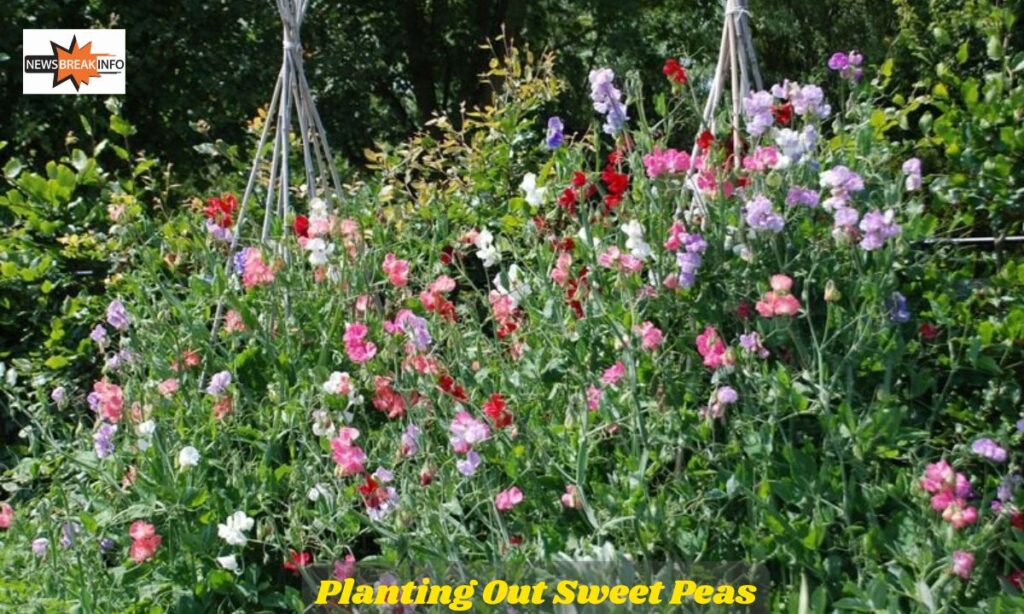
When it’s time to move your sweet pea seedlings outdoors, follow these steps to prepare your garden.
Choosing the Right Location
Select a sunny, well-draining location for your sweet peas. They need plenty of light to bloom and healthy, fertile soil to grow strong roots.
Preparing the Garden Bed
Prepare the garden bed by loosening the soil to a depth of about 6 inches and mixing in compost or organic material to improve fertility. Space the seedlings about 6-8 inches apart to allow room for growth.
Planting Sweet Peas in the Garden
Dig holes large enough to accommodate the seedlings’ roots. Place each seedling into the hole and gently cover the roots with soil. Water them immediately after planting to help settle the soil around the roots.
Also See This: How to Plant and Grow Bloomerang Lilac_2024 guide
What to Do with Short Sweet Pea Plants?
Not all sweet pea plants will grow tall vines. Some may remain short, especially if grown in containers or under unfavorable conditions.
Encouraging Short Sweet Peas to Grow Taller
Prune the plants to encourage more lateral growth, and provide them with a support structure such as a trellis or wire cage to help them grow vertically.
Accepting Short Sweet Peas
If the plants remain short, consider growing them in hanging baskets or small containers where they can still thrive and look beautiful.
Growing Sweet Pea Vines
Sweet pea vines are one of the key features of this plant. Their ability to climb and grow vertically makes them an excellent choice for gardeners with limited space.
Supporting Sweet Pea Vines
As the vines grow, provide them with a sturdy support system. Use trellises, fences, or arbors to help the vines climb. This will not only keep the plants healthy but also create an elegant, vertical display of blooms.
Training Sweet Pea Vines
Guide the vines to climb along the support by gently twisting them around the trellis or guiding them in the direction you want them to grow. Regularly check for any tangles or knots to prevent damage to the stems.
How to Harvest Sweet Pea Vines?
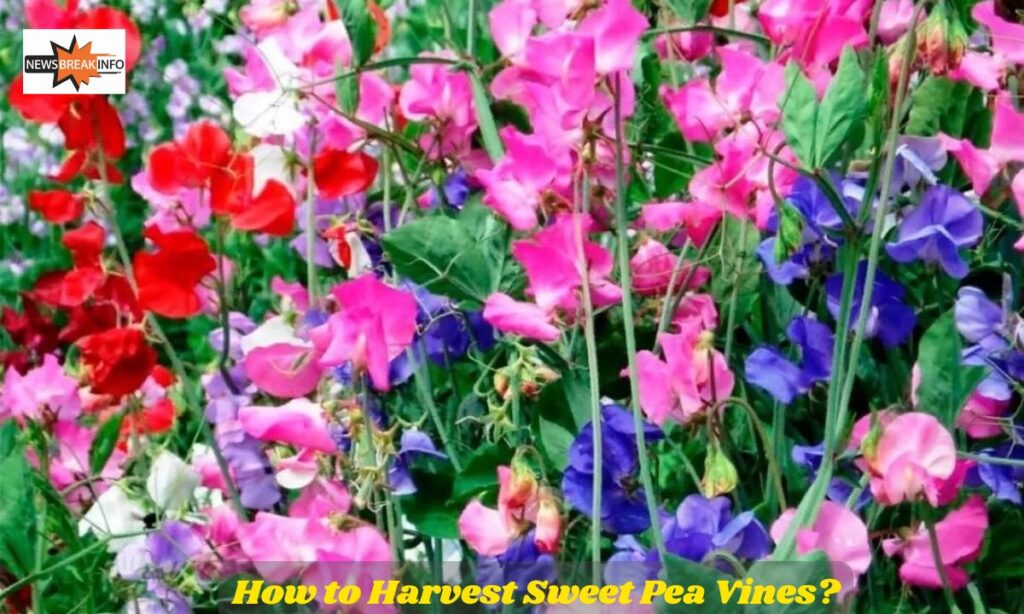
Harvesting sweet pea vines is different from harvesting flowers, but it can be done to enjoy the plant’s foliage in arrangements.
- Cut the vines when they are still green and fresh.
- Use the vines in floral arrangements or as natural decorations in wreaths and garlands.
Sweet pea vines can add a lovely natural touch to your home, even after their flowers have faded.
Sweet Pea Characteristics
Sweet peas are unique plants, with characteristics that make them stand out in any garden.
Fragrance
The most notable feature of sweet peas is their fragrant blooms. The scent is often described as sweet, fresh, and floral, making them a popular choice for bouquets.
Foliage and Climbing Ability of Sweet Peas
Sweet peas have attractive, finely cut leaves and can climb to heights of 6 feet or more. Their ability to grow vertically makes them ideal for gardens with limited space.
Blooming Period and Longevity of Sweet Peas
Sweet peas typically bloom from early summer to fall, with the flowers lasting for several weeks. They are annuals, so they will need to be replanted each year for continued blooms.
Companion Plants for Sweet Peas
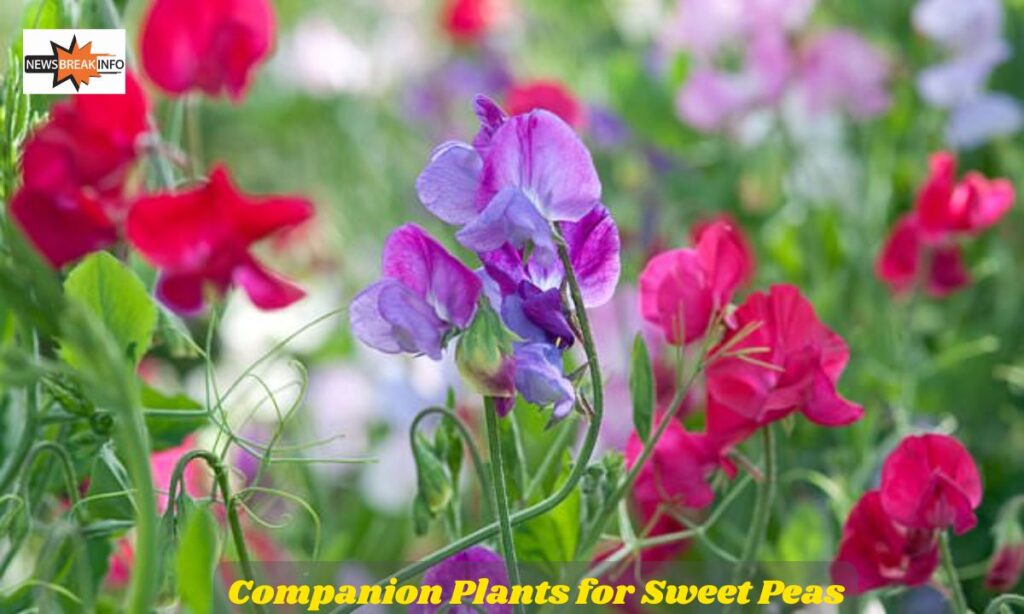
Sweet peas grow well alongside certain plants that can enhance their growth and appearance.
Nasturtiums
Nasturtiums are excellent companions for sweet peas, as they can help deter aphids and other pests.
Lettuce
Lettuce grows well with sweet peas because it thrives in similar cool conditions, and its low-growing nature complements the climbing vines of sweet peas.
Herbs
Herbs like basil, oregano, and thyme can provide natural pest control and grow well in the same conditions as sweet peas.
Conclusion
Sweet peas are beautiful, fragrant flowers that can transform any garden. By following the tips in this guide, you can grow and care for sweet peas successfully, even if you’re a beginner gardener.
Whether you’re starting them from seeds, caring for seedlings, or encouraging them to bloom, sweet peas offer plenty of opportunities to enjoy their beauty. With the right care and attention, sweet peas can become a stunning and fragrant addition to your garden year after year.

FAtima is a talented content writer and digital marketer with expertise in SEO, social media management, and online marketing.
